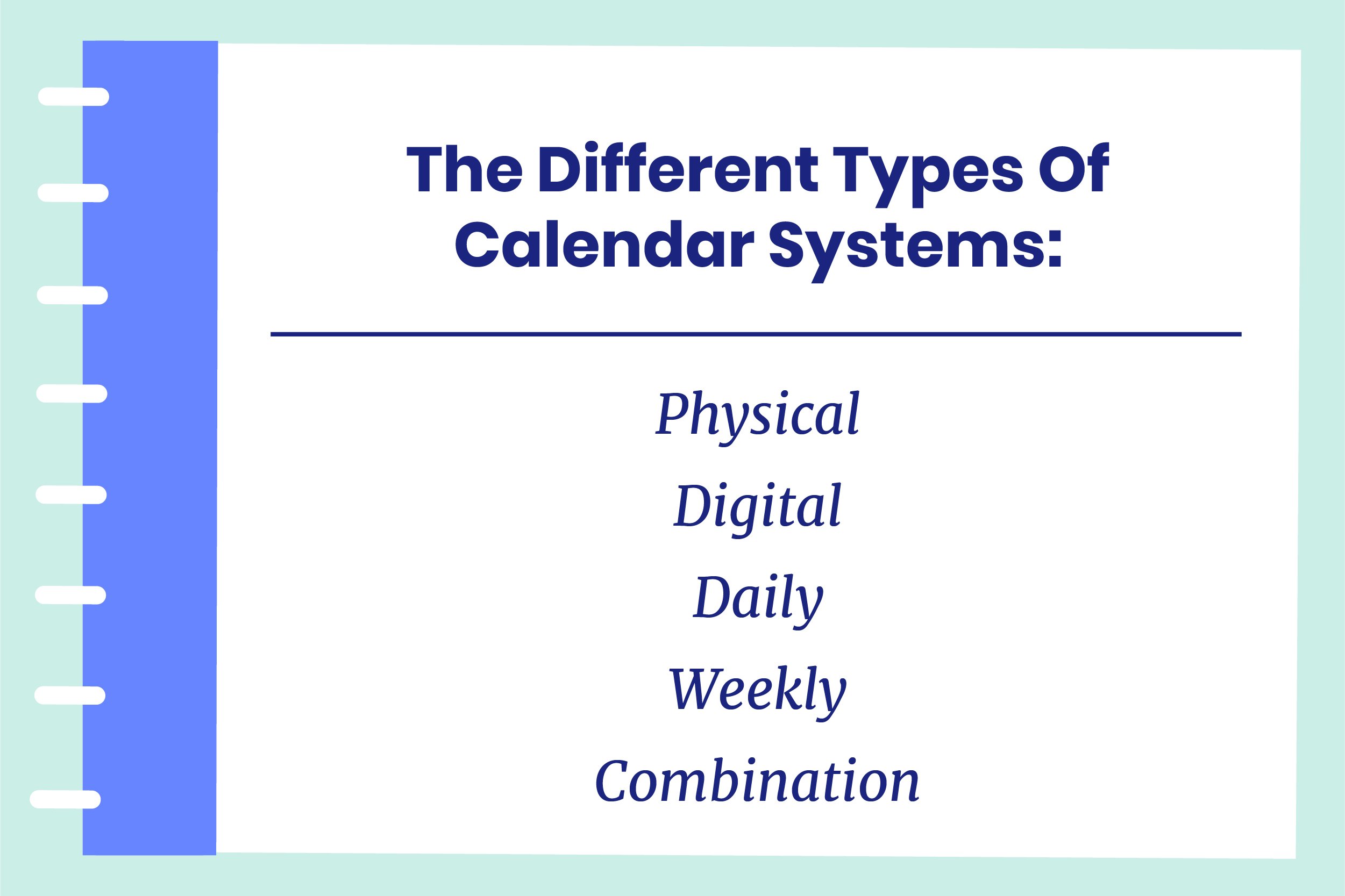For an embarrassingly long time, my fridge was covered in kids’ birthday party invites, some of which had long passed, and my desk was covered in notes I had written on scrap paper. Whenever my husband would grab his keys to go somewhere while the kids were awake, I’d look at him with confusion, because where in the world was he going? More often than not, he was going to an appointment he had told me about several times and even written down on our family calendar I created. But I never actually used it.
Does this sound familiar? (I can’t be the only one, right?)
It’s not for lack of trying. I’m sure every working mom has aspired to use some of the various calendar methods seen on Pinterest or Instagram that other women swear by only to end up with another marker board or agenda book collecting dust or an app on their phone that never gets opened. No one wants to be disorganized, because there’s nothing quite like the frustration of forgetting another soccer game and having to rush everyone out the door to get there ten minutes late. Plus, you can only reschedule a dentist appointment at the last minute so many times before they fire you as a patient.
It’s taken me a few years to come up with a system that works for me. Even now, I’d say it works about 90% of the time because there are so many things to keep track of that I’m not sure any system is perfect. Still, I’d call 90% pretty good. It took a lot of trial and error. It ultimately ended up being made up of a mixture of calendar methods.
I don’t claim to have all of the secrets because everyone has unique needs, so a single calendar doesn’t work for everyone. But if you’re looking for tips for creating a system that works for you, here are some things to consider.
What Is The Calendar For?
There are a few different reasons you may need to keep a calendar: for yourself, for work, and for your family. Depending on your situation, if you’re keeping track of everything in these categories, it’s a lot.
To simplify it a little, you can opt to keep three separate calendars, or split up your work and personal calendars, so you’re only looking at one thing at once. Whatever you decide, the first step in the process is to really consider whether a single calendar or multiple will work for you.

The Different Types Of Calendar Systems
Physical: These are the calendars that require you to handwrite your appointments and meetings. It might be a classic agenda book, a chalkboard or marker board, a giant desk calendar, a hanging calendar, or something more creative like a bullet journal.
Digital: Typically, digital calendars can be accessed through your phone, tablet, and computer and synced up with family members. Popular free apps include Google Calendar, Apple Calendar, and Microsoft Outlook. There are also plenty of apps that you can download for a fee, but always try out your free options first.
Daily: If you have jam-packed days, a daily calendar will probably work best for you because you can schedule everything down to the minute and easily see a full view of your day.
Weekly: Here, you’ll see your entire week at once. It is helpful when your kids are school-aged and have a lot of extracurriculars they attend and you and/or your partner have to figure out drop-off and pick-up.
Monthly: This is my favorite view (and my husband absolutely loathes it) because I can see everything at once. With a monthly view, you’ll know weeks in advance if you have a doctor's appointment or a family member’s birthday coming up. However, the downside is that if you tend to have many appointments in a day the view can get really overwhelming and chaotic.
Combination: The right system for you may be a combination of physical and digital and a few different views. I have four calendars to keep track of everything: a large desk calendar for my work meetings and deadlines, a digital work calendar so that if I’m on the go, I can still write things down as they come up and transfer them over to my desk calendar, a monthly chalkboard calendar for my family and a digital calendar for my family that syncs up with my husband’s (everything gets transferred to our chalkboard).
The combination works for us because I need the visual, and I like a monthly view so I don’t overwhelm myself or my family with too many events, whereas my husband works best off of a weekly or daily digital calendar.
📖Read more: Get more tips to help you balance life-work integration.
Figuring Out What Works
Give your latest attempt a fair trial run. You aren’t going to know within a week whether or not a system works for you, because you have to get over the learning curve and make little tweaks as you go along. Honestly, it might feel like a chore at first because it’s new (and might even feel like one more thing you have to do). If you can, try to give your new system at least a month - possibly longer - before you declare it a failure.
Know when to start over and try something new. Making it past that trial period doesn’t necessarily guarantee you success. If you find yourself still missing meetings, being genuinely surprised when you get appointment reminder calls and your fridge is still full of birthday party invites because you haven’t transferred the info into your calendar. In that case, it’s time to try something new.
How do you know if you’re successful? When you stick with it. Yes, there will be a bit of a learning curve at first. Still, a successful calendar system is relatively easy for you to continue using long term. You will probably never reach 100% perfection with any calendar system, but if you’re regularly showing up to scheduled events on time and you aren’t blindsided when your partner meets up with friends for an evening, then your calendar system is likely working for you.
Tips
Color-coding is your friend. Keeping track of your agenda is hard enough. But if you have kids and a partner (and even pets), that’s a lot of info that you need to be able to organize easily. So, assign each family member a color to help keep everything straight. If you’re using one calendar for everything, consider assigning your work events a color as well.
Don’t invest a lot of money upfront. I can’t tell you how many $50 planners I’ve purchased over the years that end up sitting on my desk with only a month of meetings filled out. It’s infuriating. So, always try the free trial or buy the cheapest version possible first, and if it sticks then you can upgrade to the fancier system if you so choose.
Don’t get caught up in trying to make it look pretty. There are so many beautiful bullet journals and calendars out there and if doodling and drawing is a form of self-care for you, then have at it! However, don’t feel pressured to invest in stickers and expensive markers so your planner can look pretty 𑁋a ballpoint pen and classic pencil work perfectly fine.
Streamline digital calendars. Not only can you sync digital calendars with the people in your family, but you can also manage them with your voice through Google Home/Assistant, Amazon Alexa, and Apple’s Siri. As much as I prefer a physical calendar, it’s nice to be able to shout, “Hey, Google, add lunch with mom to my calendar” when my hands are full.
Slowly add in more facets (if you want to). First and foremost, make sure your calendar system helps you stay organized and get to where you need to be on time. Once you have that part down, then try to add more in like, meal planning and reminders. Eventually, you’ll turn your calendar system into a little command center.
It Will All Come Together
Trying to find a calendar system that works when you’re already feeling overwhelmed from being disorganized is extremely frustrating. Don’t give up, though. It takes some trial and error and you’re going to keep failing until you find the system that works right for you, but once you do, you’ll feel a bit less stressed out and like you have your life together a little more.

Eventually, you’ll get to a point where you’re showing up late to soccer games simply because your kids can’t manage to remember where they put their cleats rather than because you forgot to write down their game schedule!
It’s more than jobs. We’re making progress.
The Mom Project supports women throughout their working motherhood journey. Search for career opportunities with vetted, family-friendly employers, and get access to job search tools, career development resources and a thriving community of moms and allies. 




